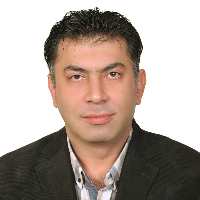Dialogue in Persian Music Orchestration
Author(s):
Article Type:
Research/Original Article (دارای رتبه معتبر)
Abstract:
In this article, the researchers have analyzed the orchestration of Persian musical instruments in pieces that have been composed based on different types of musical textures and polyphonic expressions. Such an approach to musical composition in these pieces has led to the creation of a different kind of “dialogue” between instruments in ensembles and the “Persian Musical Instruments Orchestra”. Undoubtedly, the combination of Persian instruments analyzed and discussed in this research differs greatly from the instrumental combinations of Persian ensembles up to the Qajar period. This difference is easily discernible in elements such as timber, balance, number of instruments used, sound volume, and dynamics.This research is based on the musical scores of the previous century (from the beginning of Pahlavi dynasty onwards). Special attention has been paid to musical scores that have been produced between the beginning of Alinaqi Vaziri’s musical activities (which marked a turning point in Persian music) and the formation of the “Chavosh” center and other thought-provoking musical and cultural trends in recent decades, which have led to the formation of numerous ensembles and Persian Musical Instruments Orchestras, as well as the creation and dissemination of Persian pieces composed based on “texture”. It seems that the main necessity for the expansion of the above-mentioned musical and cultural currents is the Iranian society’s longing for social and cultural development after the Qajar period. It should be noted that the tendency of contemporary musicians toward polyphony in art and thought, as well as the worldwide changes that they take into consideration emphasize the importance of this research. In this research, a Phenomenological approach has been incorporated through a direct analysis of the Persian repertoire, and special care has been taken to avoid any biased inference.Finally, the conclusion of the research leads to the introduction of two categories: “instrumental function” (in elements such as melodic lines, counterpoint, harmony, and bass) and “score development and progression” (through repetition, accompaniment, pedals, solos, tuttis, and instrumental variation). In other words, every possible function of Persian instruments and the different ways in which they may be combined is included in the provided classification.To achieve this end, the authors have utilized an analytical- interpretive method in collecting data from library references and Persian instrumental scores.
Keywords:
Language:
Persian
Published:
Journal of dramatic Arts and Music, Volume:13 Issue: 29, 2023
Pages:
41 to 63
magiran.com/p2559203
دانلود و مطالعه متن این مقاله با یکی از روشهای زیر امکان پذیر است:
اشتراک شخصی
با عضویت و پرداخت آنلاین حق اشتراک یکساله به مبلغ 1,390,000ريال میتوانید 70 عنوان مطلب دانلود کنید!
اشتراک سازمانی
به کتابخانه دانشگاه یا محل کار خود پیشنهاد کنید تا اشتراک سازمانی این پایگاه را برای دسترسی نامحدود همه کاربران به متن مطالب تهیه نمایند!
توجه!
- حق عضویت دریافتی صرف حمایت از نشریات عضو و نگهداری، تکمیل و توسعه مگیران میشود.
- پرداخت حق اشتراک و دانلود مقالات اجازه بازنشر آن در سایر رسانههای چاپی و دیجیتال را به کاربر نمیدهد.
In order to view content subscription is required
Personal subscription
Subscribe magiran.com for 70 € euros via PayPal and download 70 articles during a year.
Organization subscription
Please contact us to subscribe your university or library for unlimited access!



